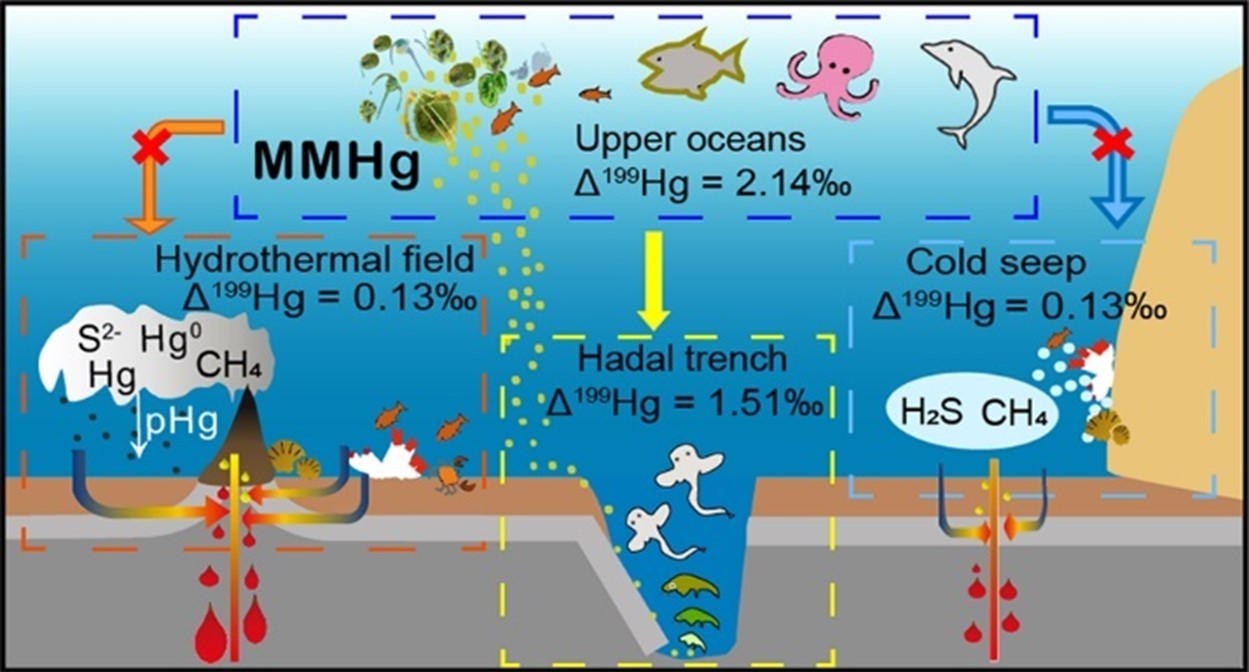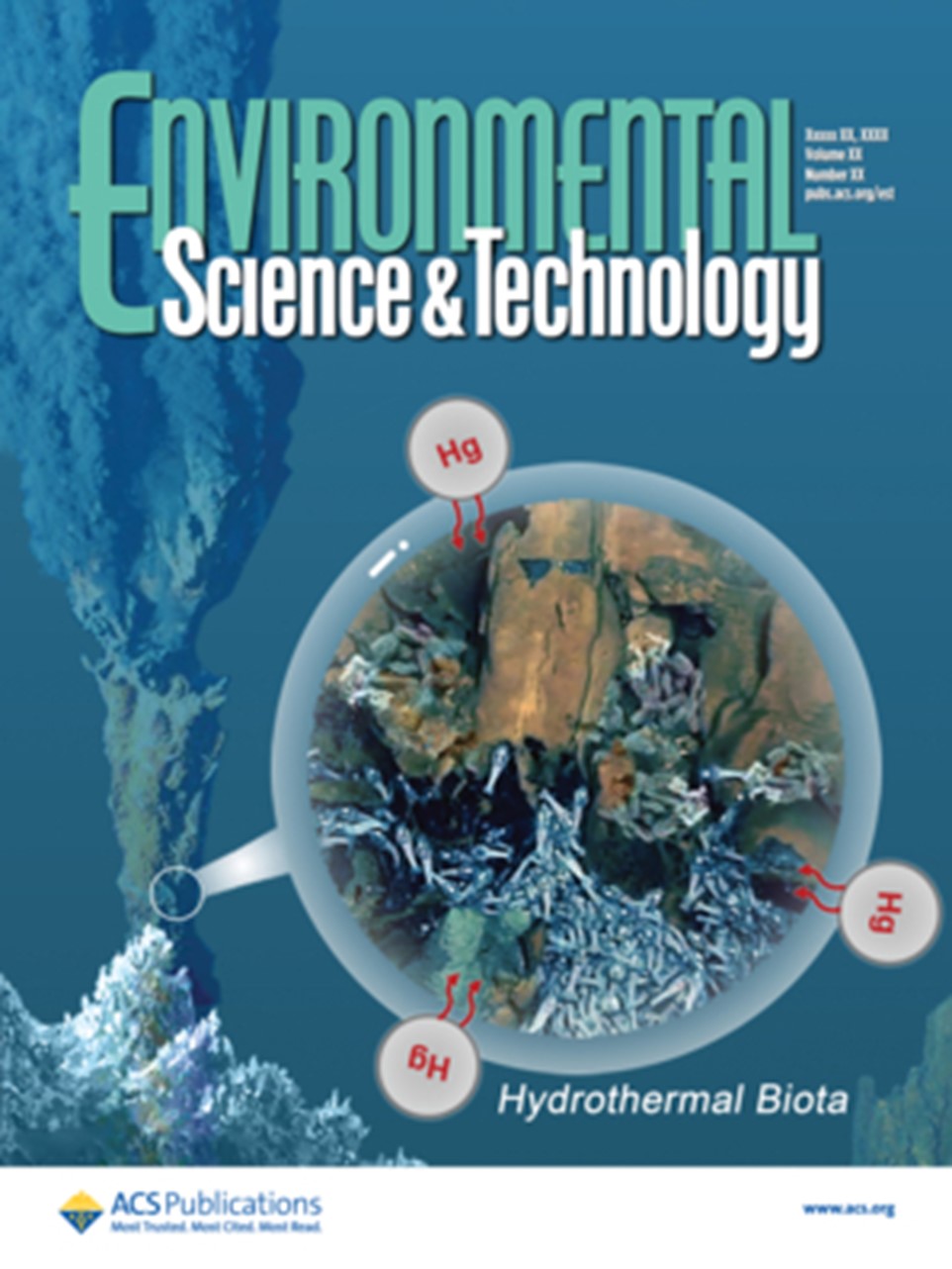Marine environment has food webs with very different ecological structures. But how do these food webs transfer matter and energy? How will future climate changes affect the food web structures? These are important questions related to the origins and evolution of the life. Mercury (Hg) is a highly volatile, globally transportable, and toxic element whose anthropogenic emissions are strictly regulated by the International Mercury Convention. The oceans are an important Hg reservoir in the Earth's surface system. Inorganic Hg in the ocean tend to transform into highly toxic methylmercury (MeHg), which can be bioaccumulates and biomagnifies through food webs. Thus, studies of Hg cycling within and between food webs can help to understand the organic matter and energy cycles of marine ecosystems.
However, the study of Hg biogeochemistry cycling is mostly focused on the upper ocean (<1000 m) photosynthetic food webs. Recent studies showed that Hg in the trench fauna mostly originated from monomethylmercury (MMHg) of the upper marine photosynthetic food webs (Blum et al., 2020; Sun et al., 2020) (Figure 1). Yet, Hg sources in the deep-sea chemosynthetic food webs are still uncertain. In this study, we find that Hg is highly enriched in hydrothermal sulfides, which correlated with varying Hg concentrations in inhabited biota. Our first measurement of Hg isotopic compositions of epibenthic biota from hydrothermal fields and cold seeps indicates that the Hg in chemosynthetic food webs is almost exclusively sourced from hydrothermal fluids and ambient seawater Hg, with little to no contribution from MMHg in photosynthetic food webs of upper oceans. In addition, the Hg isotopic compositions in the submarine hydrothermal sulfides suggest seawater Hg removal flux by sulfides is potentially significant. The seawater Hg sink fluxes via seafloor hydrothermal sulfides are thus equally important as those via trench sediments, also estimated as ~160 Mg y-1 (Liu et al., 2021). These fluxes are not explicitly included in the most recent Global Mercury Assessment report by UN Environment Programme.

Figure 1. Sketch of Hg isotope signatures and Hg transport patterns in the food webs of different marine ecosystems.

Figure 2. This study was selected as a Supplement Cover in ES&T Journal.
Article information:
Jingjing Yuan, Yi Liu, Shun Chen, Xiaotong Peng, Yu-Feng Li, Songjing Li, Rui Zhang, Wang Zheng, Jiubin Chen, Ruoyu Sun*, and Lars-Eric Heimbürger-Boavida. Mercury Isotopes in Deep-Sea Epibenthic Biota Suggest Limited Hg Transfer from Photosynthetic to Chemosynthetic Food Webs. Environ. Sci. Technol.
https://pubs.acs.org/doi/full/10.1021/acs.est.3c01276
References
[1] Blum, J.D., Drazen, J.C., Johnson, M.W., Popp, B.N., Motta, L.C. and Jamieson, A.J. (2020) Mercury isotopes identify near-surface marine mercury in deep-sea trench biota. P. Natl. Acad. Sci. USA 117, 29292-29298.
[2] Liu, M., Xiao, W., Zhang, Q., Yuan, S., Raymond, P.A., Chen, J., Liu, J., Tao, S., Xu, Y. and Wang, X. (2021) Substantial accumulation of mercury in the deepest parts of the ocean and implications for the environmental mercury cycle. P. Natl. Acad. Sci. USA 118, e2102629118.
[3] Sun, R., Yuan, J., Sonke, J.E., Zhang, Y., Zhang, T., Zheng, W., Chen, S., Meng, M., Chen, J., Liu, Y., Peng, X. and Liu, C. (2020) Methylmercury produced in upper oceans accumulates in deep Mariana Trench fauna. Nat. Commun. 11, 3389.